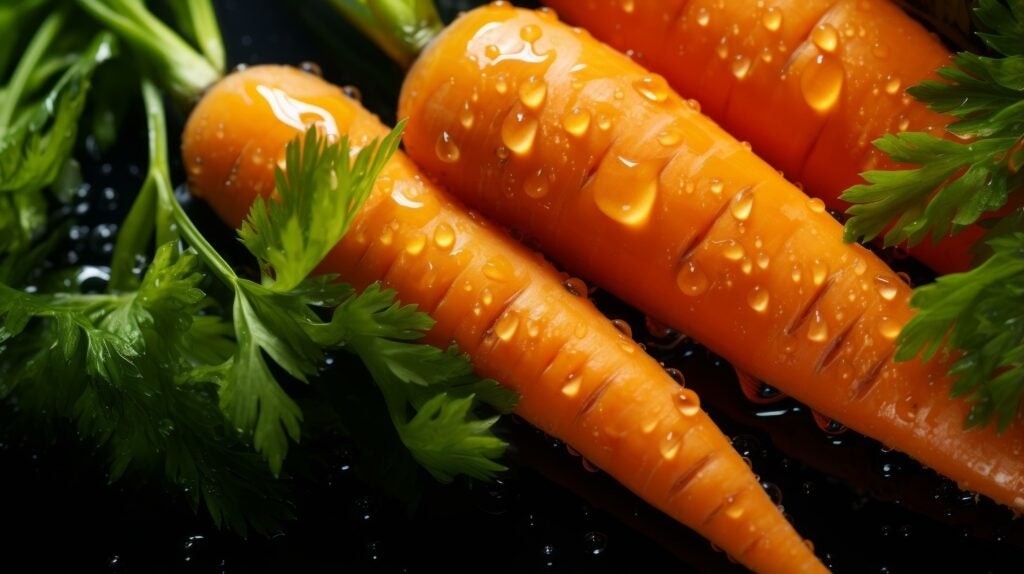Vitamin A is an essential nutrient that plays a crucial role in maintaining overall health. It’s vital for vision, immune function, reproduction, and cell growth. Getting enough vitamin A through your diet is important, but knowing what foods are rich in this nutrient is key. Let’s explore the best food sources of vitamin A.
Understanding Vitamin A
Vitamin A exists in two main forms in our diet:
- Preformed Vitamin A (Retinol, Retinyl Esters): Found in animal products, fortified foods, and supplements.
- Provitamin A Carotenoids (Alpha-carotene, Beta-carotene): Found in plant-based foods and converted into retinol in the body. Beta-carotene is responsible for the orange color in many vegetables.
It’s worth noting that some carotenoids, like lycopene, lutein, and zeaxanthin, aren’t converted to vitamin A but still offer significant health benefits.
Recommended Daily Intake of Vitamin A
The Institute of Medicine recommends the following daily allowances of Vitamin A, measured in micrograms (mcg) of retinol activity equivalents (RAE):
- Adult Men (19+ years): 900 mcg RAE (3,000 IU)
- Adult Women (19+ years): 700 mcg RAE (2,333 IU)
The Tolerable Upper Intake Level (UL) for preformed vitamin A is 3,000 mcg. Exceeding this amount could lead to toxicity.
Top Food Sources of Vitamin A
To ensure you’re getting enough vitamin A, incorporate these foods into your diet:
1. Leafy Green Vegetables
Leafy greens like kale, spinach, and broccoli are excellent sources of provitamin A carotenoids. They’re packed with nutrients and offer a variety of health benefits.
2. Orange and Yellow Vegetables
Carrots, sweet potatoes, pumpkin, and other winter squashes are known for their high beta-carotene content.
3. Tomatoes
Tomatoes are a good source of lycopene, a carotenoid with antioxidant properties. While not converted into vitamin A, lycopene is associated with a reduced risk of certain cancers.
4. Red Bell Peppers
Red bell peppers contain carotenoids, including beta-carotene, contributing to your vitamin A intake.
5. Fruits
Cantaloupe and mango are delicious fruits that also provide provitamin A carotenoids.
6. Animal Products
- Beef Liver: An incredibly rich source of preformed vitamin A.
- Fish Oils: Certain fish oils contain significant amounts of retinol.
- Milk: Fortified milk can be a good source of vitamin A.
- Eggs: Another source of preformed vitamin A.
7. Fortified Foods
Many breakfast cereals, juices, and dairy products are fortified with vitamin A. Check the nutrition labels for more information.
Health Benefits of Vitamin A Rich Foods
Consuming a variety of foods rich in vitamin A, especially fruits and vegetables, is linked to several health benefits:
- Eye Health: Vitamin A is crucial for vision, particularly in low light. It supports overall eye health and may reduce the risk of age-related macular degeneration (AMD). Lutein and zeaxanthin are two carotenoids found in the retina that are protective.
- Immune Function: Vitamin A stimulates the production and activity of white blood cells, which are essential for fighting off infections.
- Cancer Prevention: Some studies suggest that higher intakes of carotenoids from fruits and vegetables may be associated with a lower risk of certain cancers, such as lung and prostate cancer. Lycopene, found in tomatoes, has shown promise in reducing prostate cancer risk.
- Cognitive Function: Higher blood levels of alpha-carotene have been associated with better cognitive function, including memory, learning, and attention.
Deficiency and Toxicity of Vitamin A
While rare in developed countries, vitamin A deficiency can occur due to conditions that interfere with nutrient absorption, such as celiac disease or Crohn’s disease, or from limited diets. Symptoms of deficiency include dry eyes, night blindness, and increased susceptibility to infections.
Vitamin A toxicity is more common due to high doses of preformed vitamin A from supplements. Since vitamin A is fat-soluble, excess amounts are stored in the body and can become toxic. Signs of toxicity include vision changes, bone pain, and nausea.
It’s generally safe to get your Vitamin A from beta-carotene, as the body will only convert it to Vitamin A as needed, so there is less risk of getting too much.
Conclusion
Including a variety of foods rich in vitamin A is essential for maintaining optimal health. By incorporating leafy greens, orange and yellow vegetables, fruits, and animal products into your diet, you can ensure you’re getting enough of this vital nutrient. Remember to be mindful of your intake of preformed vitamin A from supplements to avoid toxicity. Prioritizing whole foods is a safe and effective way to reap the many benefits of vitamin A.

